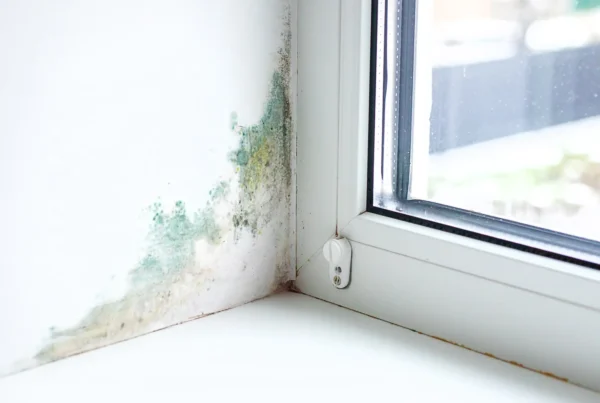In the last article, we took a deep dive into the brain chemical glutamate. If your child is experiencing anxiety, stimming, restlessness, tics, inattention, or seizures, it may be beneficial to reduce glutamate in their diet..
This week we’re going to go over some simple things you can do to address these troublesome symptoms through a diet to lower glutamate in children and other natural ways to reduce glutamate.
First, here’s a quick summary of what we covered last time:
👉 Glutamate is an excitatory neurotransmitter, meaning that it excites (stimulates) a nerve cell, making it easier for chemical messages to move from one nerve cell to the next.
👉 Glutamate impacts a wide variety of brain and body functions including:
✔ Learning and memory
✔ Pain signals
✔ Sleep-wake cycles
✔ Relaxation
✔ Anxiety regulation
✔ Muscle function
✔ Gut Function
✔ Immunity
✔ Brain function
👉 Excess glutamate can cause brain excitotoxicity, resulting in symptoms including OCD, anxiety, stimming, restlessness, tics, inattention, and seizures.
👉 Glutamate should be balanced with GABA (the calming neurotransmitter).
How can I tell if my child has too much glutamate?
There are lab tests that can help you get a definitive answer on your child’s glutamate levels, including Urine Amino Analysis, blood work that tests for blood plasma glutamate levels (although this may not give you an accurate picture of what’s going on), MRI, and lumbar puncture (which while accurate is extremely invasive).
You can also look at your child’s symptoms.
Symptoms that might indicate the need for natural ways to reduce glutamate:
😕 High Anxiety
😕 Restless mind
😕 Trouble turning the brain off to relax
😕 Disorganized attention
😕 Inability to focus
😕 Excessive worry
😕 Gets overwhelmed easily
😕 Depression
😕 OCD (Obsessive Compulsive Disorder)
😕 Hand flapping or stimming
😕 Tics
😕 Migraines
😕 Seizures
😕 Symptoms of PANDAS/PANS
How can I help regulate my child’s glutamate?
There are things you can do. But first, I want to clear up a misconception. Many parents are told to take their child to therapy when they are struggling with a neurological disorder. While therapy has its place, it will not affect glutamate levels in the brain. In other words, if glutamate imbalance is the problem, therapy won’t fix it.
Thankfully, there are simple steps you can take that will help your child regulate glutamate.
Diet
Probably the easiest and most natural way to reduce glutamate excitotoxicity is through a diet that lowers glutamate in children. Glutamate is a neurotransmitter, but it’s also an amino acid. And because glutamate is a non-essential amino acid, your child’s body can make its own. There’s no need to include glutamate-rich foods in their diet. You can remove foods that contain high amounts of free glutamate without worrying about any nutrient deficiencies.
Foods high in glutamate:
🌾 Gluten
🥛 Dairy
🧀 Aged cheeses
🌿 Seaweed
🍄 Mushrooms
🍅 Tomato sauce
🥢 Soy
🍔 Processed foods
🧂 Additives like MSG
🍬 Aspartame
💧 Hydrolyzed proteins
🍖 Gelatin
🥣 Bone broth
🥛 Fermented foods, including kefir, cheese, preserved meats, and soy sauce
You can also increase nutrients that help lower glutamate:
🥗 Vitamin C
🥗 Magnesium
🥗 Vitamin D
🥗 Vitamin E
🥗 Omega-3 fatty acids
🥗 Zinc
For more on easy and delicious ways to implement a low glutamate diet, download my free Low Glutamate Meal Plan and Recipe Guide. Lowering glutamate in your child’s diet doesn’t have to be complicated. Get your free copy here.
Supplements
Along with a diet to lower glutamate in children, you can add supplements that will help reduce glutamate and increase GABA. It’s important to keep glutamate and GABA balanced.
As always, I recommend that you talk with your child’s practitioner before adding supplements. If you need help determining which supplements are best for your child, you can book a free consultation with my team here.
Supplements that can help reduce glutamate:
💊 Magnesium – blocks one of the glutamate receptors
💊 Selenium – protective against glutamate
💊 B12 – protective against glutamate
💊 Alpha Lipoic Acid (ALA) – helps convert glutamate
💊 Berberine – helps transport/convert glutamate and is also protective
💊 Certain herbs, including cats claw, licorice root, ginseng, and ginkgo biloba, can help
💊 N-Acetyl Cysteine (NAC) – helps the body regulate glutamate
💊 B6 (p5p) – a cofactor to make GABA in the brain
💊 GABA supplements – to increase GABA
Lifestyle Adjustments to Reduce Glutamate
Making lifestyle changes can naturally reduce glutamate and balance GABA levels. Here are a few you can try:
✔ Reduce screen time – Research shows that EMFs (electromagnetic fields) increase glutamate.
✔ Exercise – Research shows that exercise enhances brain metabolism, which can help clear excess glutamate.
✔ Stress reduction – Stress levels increase glutamate levels in the brain. And reducing stress can encourage GABA production, which can counteract glutamate.
✔ Acupuncture – May help balance glutamate levels and stimulate GABA production.
✔ Meditation – Can stimulate the production of GABA and influence brain metabolism
✔ Neurofeedback – Can balance the excitatory (glutamate) and inhibitory (GABA) neurotransmitter systems.
✔ Reduce neurotoxin exposure – Neurotoxins stimulate glutamate activity and can be found in a variety of environmental sources, including heavy metals, pesticides, certain types of molds, and household cleaning products.
✔ Detoxification – Can help your child’s body flush out neurotoxins and reduce their body’s total load. I recommend you work with a practitioner for this one though. Detoxing before your child’s body is ready can cause more problems than it solves.
What if I need help navigating all this?
If you’re reading this article, you likely have spent a lot of time researching ways to help your child recover. There’s a lot of information out there – and not all of it is particularly helpful. I’ve been doing this work for 20 years now. I’ve done the research and applied the knowledge I’ve gained to help hundreds of children.
Now, you can access my knowledge and strategies in the Foundations in Healing Jumpstart program.
The Foundations Program is an 8-week live mentorship program designed to reverse the symptoms of neuroinflammation in children and young adults with PANS/PANDAS, autism, ADHD, and Lyme. In addition to gaining access to my proven methodologies and proprietary knowledge, you will also be learning directly from me in an intimate group setting.
Resources:
- https://onlinelibrary.wiley.com/doi/abs/10.1111/ejn.14307
- https://my.clevelandclinic.org/health/articles/22839-glutamate
- https://www.nature.com/articles/npp2016260
- https://www.researchgate.net/publication/40729934_Glutamatergic_modulatory_therapy_for_Tourette_syndrome
- https://www.verywellhealth.com/treating-gaba-and-glutamate-dysregulation-716040
- https://tacanow.org/family-resources/glutamate/
- https://www.optimallivingdynamics.com/blog/29-effective-ways-to-reduce-excess-glutamate-in-the-brain







